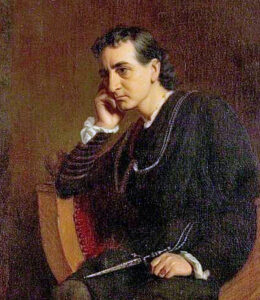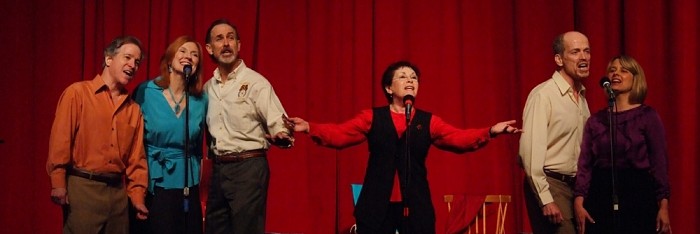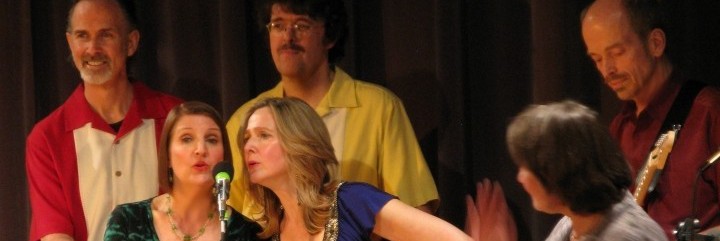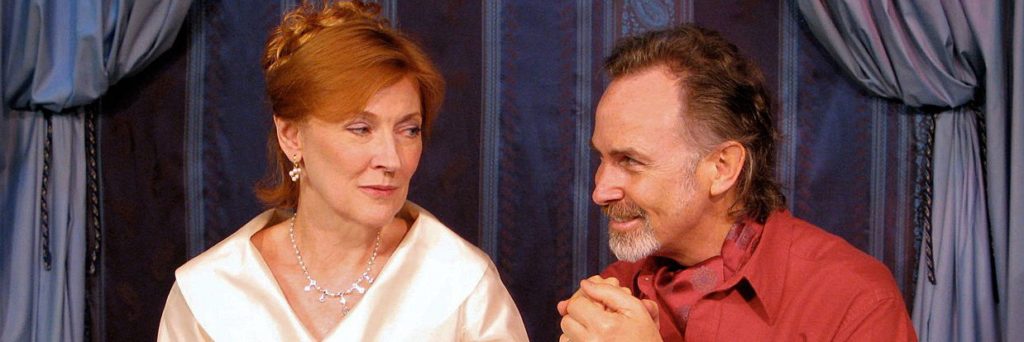Hamlet Once More, Different
A Report by Anne Fielding of an
Aesthetic Realism Poetry Class given by Eli Siegel
Hamlet once more is walking in the hall,
Hamlet once more, different in the hall,
And as he walks, he’s thinking for us all.
—from Shakespeare’s Hamlet: Revisited by Eli Siegel

by Oliver Ingraham Lay, 1887 (detail)
On a Sunday afternoon in September, 1963, at a Time Enough Poetry Class, I heard Eli Siegel read the first act of Hamlet. It was an important experience in theatre. Without smoke and dim lights, supernatural sounds or eerie music, there was the platform at Elsinore, with Bernardo, Marcellus, and Horatio waiting. There was the mystery and wonder with the feeling of cold night; there was the poetry and the life of it.
Since January 20th I had been performing in Eli Siegel’s critical masterpiece Shakespeare’s Hamlet: Revisited at the Terrain Gallery and the Gramercy Arts Theatre. What a time it had been! New York City had become aware of a new Hamlet. As the opening sentence of the Prologue tells:
It is a new Hamlet because it is a Hamlet who does not care for his father entirely.
This had never been seen before by any critic, and it affected all that happens in the play, and all that does not happen.
My own work as actor had deeply benefited with the months of playing. Yet, on this particular Sunday afternoon I found, to my actor’s joy, that there was more to see. For in the way Mr. Siegel read the lines of Act I—lines I knew well—there was a new mingling of the everyday and the grand, the poetic and the ordinary, the permanent and the touchable. It is this mingling every actor of Shakespeare looks for. This reading had the everydayness of prose and the greatness of poetry as one thing. Eli Siegel understood poetry, and he understood the self; what people feel inside. He said: “The world, art, and self explain each other; each is the aesthetic oneness of opposites.” The knowledge he founded, Aesthetic Realism, meets what actors and people are looking for.
When we act in Shakespeare and the classics, we have these questions: How can we honor the poetry and at the same time be fresh, spontaneous? How can we be just to the music of an iambic pentameter line and to the immediacy of the moment, the lively impulse? I had these questions when I played Juliet for the New York Shakespeare Festival, and Hermia in A Midsummer Night’s Dream in Central Park, and when I was the queen in Richard II at Stratford. These questions, as always, beautifully rage in the acting schools and on the boards of the land.
Eli Siegel’s Reading: True to the Poetry & Humanity
On that September day we heard a reading that was truthful to the poetry and the humanity. Technique and emotion were one—they were not just present—they were one. There was no split.
In the beginning, Mr. Siegel read the lines simply and quietly. His pace was slower than I had heard before. In this reading there was something artless and almost casual—almost, but not quite.
Who’s there?
Nay, answer me; stand, and unfold yourself.

—These beginning lines came straight from a self that was engaged. Within the slowness was something arresting—
I have seen nothing
—Here, a slight pause before the word nothing gave a sense of drama in the unknown. Throughout there were new and unexpected accents and pauses. Sometimes a word was lingered on, surprisingly. All of it had a rightness—the choices came from a source that was sure. The room was still. Thought was going on and thought had become dramatically vivid.
When Francisco said:
Not a mouse stirring
—there was delicate humor. One could almost feel that mouse, the way the line was said. A mouse in relation to a universe, vast and unknown, made for such comfortable lightsomeness. Surely this is a small moment, but it was moments like this one that gave a quality of something new, fresh, something happening that very moment. And the humor and the mystery were of the same world. That is why a seemingly small moment and the grander moments of terror and great poetry were of a piece. Reality seemed to have a wonderful coherence.
We heard all the words and they made sense. In the performances of Hamlet I have seen and heard, that is often not the case. Words are sometimes not understood, even when you know them by heart. Speeches are taken as if they were just that—speeches. The nuances of life and thought seem absent. And then there is that tone—orotund, well-trained, “cultured,” and not very human. Lines don’t come from selves that live. (The other side of this is the “folksy,” “just us” approach.) It is hard to be fair to poetry and to life in the ordinary, even rough sense.
William Carlos Williams said something of Eli Siegel’s work as a poet which comments on our experience listening to Mr. Siegel read Hamlet: “The evidence is technical but it comes out at the non-technical level as either great pleasure to the beholder, a deeper taking of the breath, a feeling of cleanliness, which is the sign of the truly new.” This was so as Mr. Siegel read Hamlet. It was utterly down to earth and it soared.
Questioning Within and Without
The first long speech of Claudius to the court in Scene 2 was interesting, and, of all things, funny! With all his pomposity, Claudius was a person. Even within villainy there was uncertainty. For the first time this scene seemed to be about real events, not just exposition. Hamlet’s soliloquy in Scene 2 jutted more and was less smooth than I had ever heard. How hard it is to have the “O, that this too too solid flesh would melt,” soliloquy sound unplanned. Yet it did, even while the poetry was there.
A high point was the reading of Scenes 4 and 5—the famous Ghost Scenes—beginning with Horatio’s “Look, my lord, it comes!” This was said with slow, grand terror, with a pause after the word look, and another after my lord, and the voice low and ominous.
These scenes had intense stillness. Questioning seemed to be going on at every turn—questioning within and without. How unconventionally these scenes were—I almost said played, they seemed played—read. There was none of the usual “theatricality” which consists of persons talking very loud and fast, in tones of Shakespearean urgency and reverence. Here, as Hamlet asked his father questions—Say, why is this? wherefore? what should we do?—there was intensity, but it came from a belief in the situation.
Shakespeare’s Hamlet Seen Newly

The scene had that mingling of the awesome and the domestic, as Hamlet spoke to his father, as the soldiers watched and spoke in confusion, as the Ghost listened. There was the uncertainty of life at its greatest and most terrifying, and life as ordinary, immediate, embarrassingly domestic.
A thing that struck me was this: These Ghost scenes were read completely differently from anything I had imagined. They were ever so much slower and they were quiet—again there was the feeling of almost casual. There was a sense, through the way Mr. Siegel read the lines, of things creeping up on you and taking hold of you without your knowing just what was happening. Words, lines unfolded—with a wonderful awkwardness and ease—and they seemed to come at that very moment, with no plan, no dramatic idea in mind, no theatrical moment thought of. And none of it spilled over, either.
Since that Sunday, Eli Siegel has read the whole of Hamlet, and his reading has been recorded. Its newness remains. It will be studied by persons in the theatre of today and in the theatre of the future. Honesty in a great field is to be cared for and learned from.
I mention some high points:
In Act II, Scene 2, in the scene with Polonius and Hamlet, there was a quietly mournful humor, instead of the usual brittle sarcasm—
Hamlet. Words, words, words.
Polonius. What is the matter, my lord?
Hamlet. Between who?
Polonius. I mean, the matter you read, my lord.
—Polonius—a person at last—was affected by Hamlet, even as he spied on him.
In the Closet Scene, when Hamlet is speaking to his mother and sees the Ghost, there was tremendous emotion and great control. There was the sadness of people who are close but who do not understand each other, and perhaps never will. As Hamlet says to his mother:
On him, on him! Look you, how pale he glares!
—there was the quiet of infinite sadness. There was no shouting, no rant, no hollow elocution.
And when the Queen told of the death of Ophelia:
There is a willow grows aslant a brook
—one had the feeling that, indeed, Ophelia had just drowned. The Queen was real and the situation was.
And Scene I of Act V at Ophelia’s grave had all the pretense in grief that has ever been shown beside a grave, and all the anger that has ever been felt in seeing this pretense. ’Swounds! the scene was great! The lines:
This is I, Hamlet, the Dane!
were naked in power. When Hamlet and Laertes grappled in the grave, they grappled. The forces of good and evil in the universe fought as these two fought, and the battle was beautiful.
Who Is Hamlet?

Throughout, Hamlet’s thoughtfulness, his deep gaiety and charm, his care for people were present. In the last act, we felt Hamlet’s tiredness, his weariness. Hamlet became tangible.
Sir, I will walk here in the hall; if it please his Majesty, ’tis the breathing time of day with me. . .
One knew that Hamlet was going to die in the fencing match, and that nothing could prevent it, and it was like knowing this about someone dear to us. Hamlet was a person, not only a character in a play. Isn’t this how Shakespeare meant it to be? Didn’t he mean us to feel that Hamlet lived and died, and that his living and dying is of us, of our very selves?
Hamlet matters to humanity and the whole world. Through this reading by Eli Siegel, we who heard it understood better why Hamlet matters so much, and why we care for him as we do. So I am grateful to William Shakespeare for giving the world Hamlet, and I am grateful to Eli Siegel for showing the world Hamlet, as he was meant to be.










